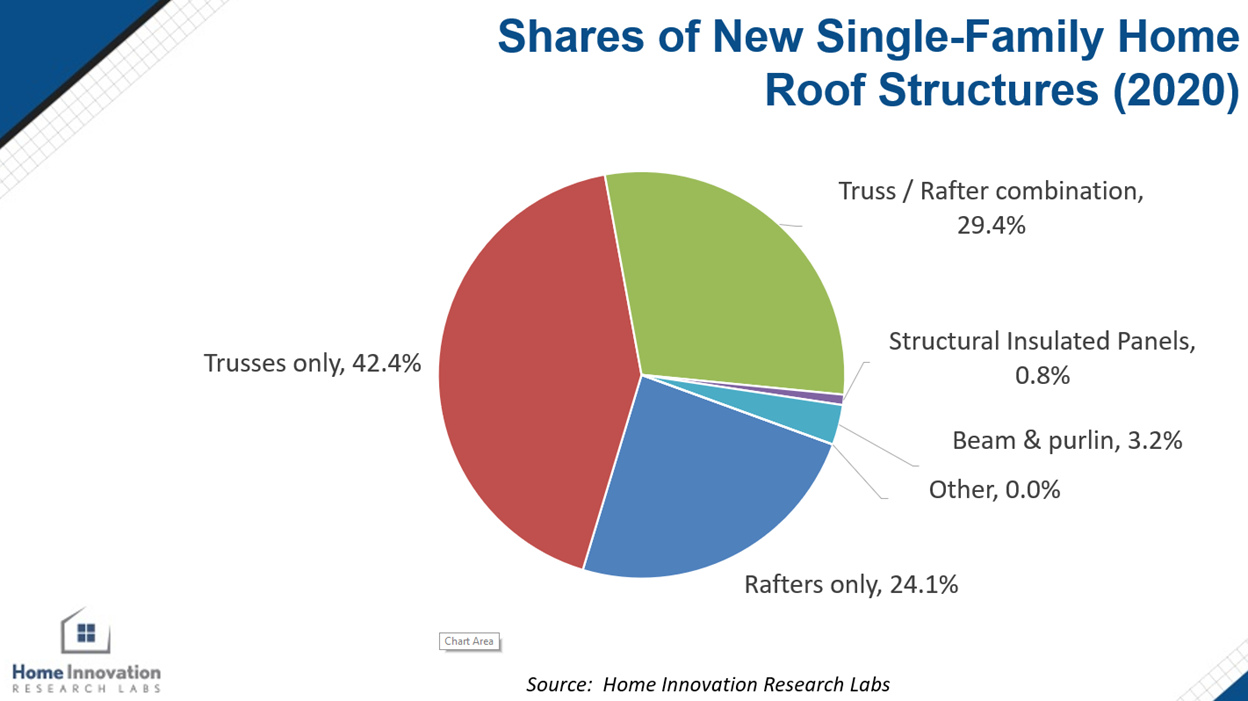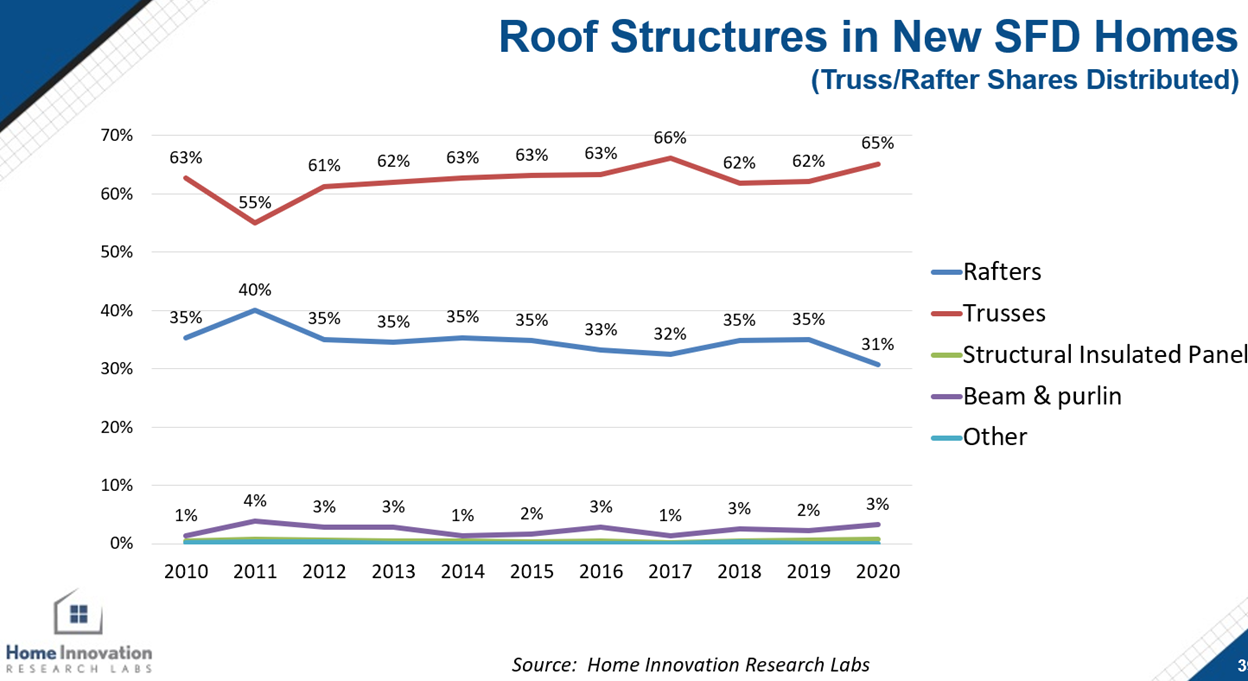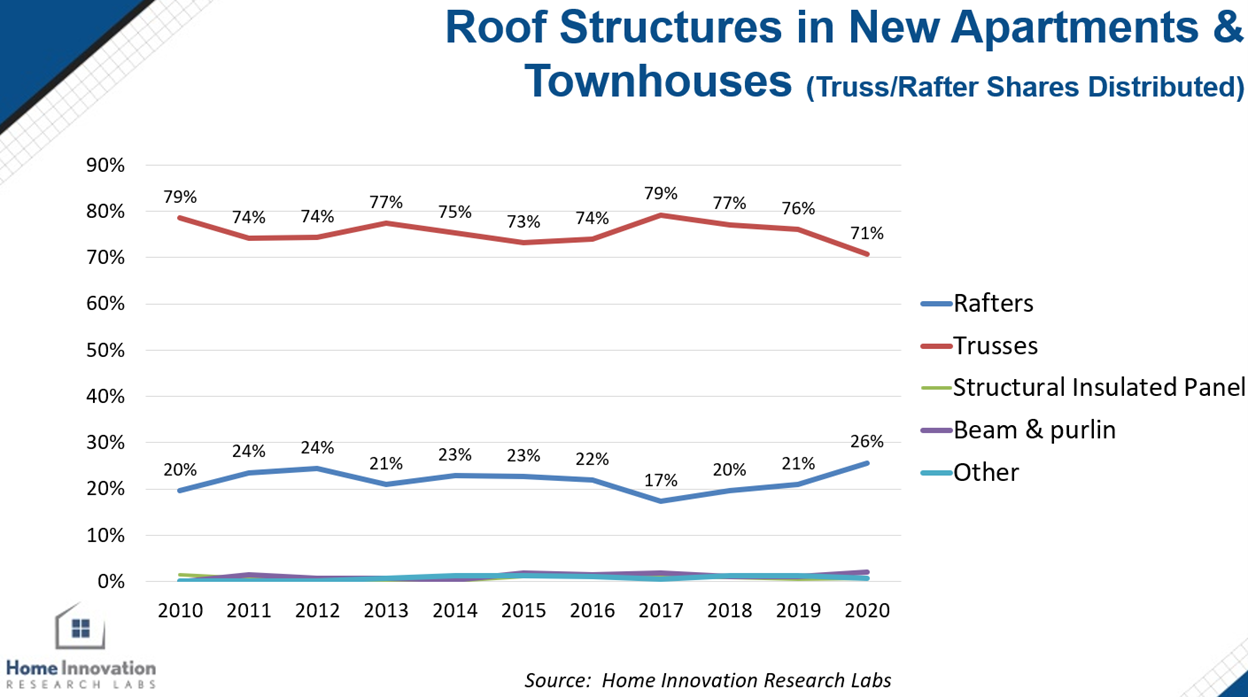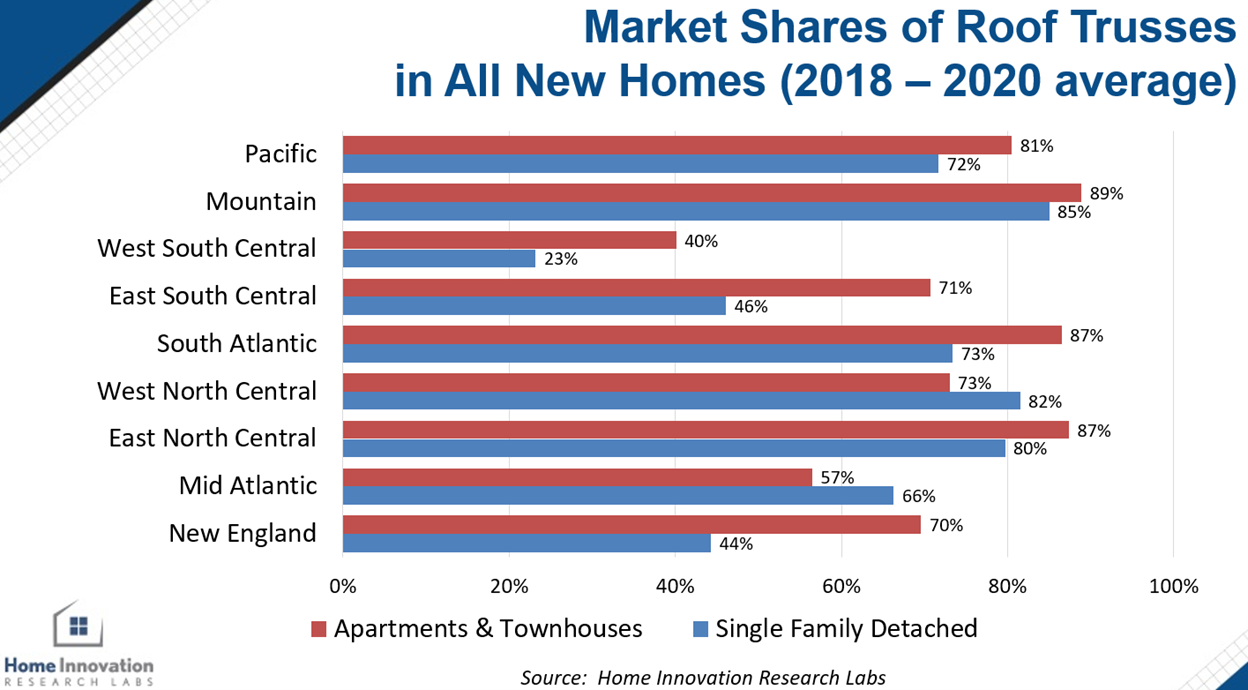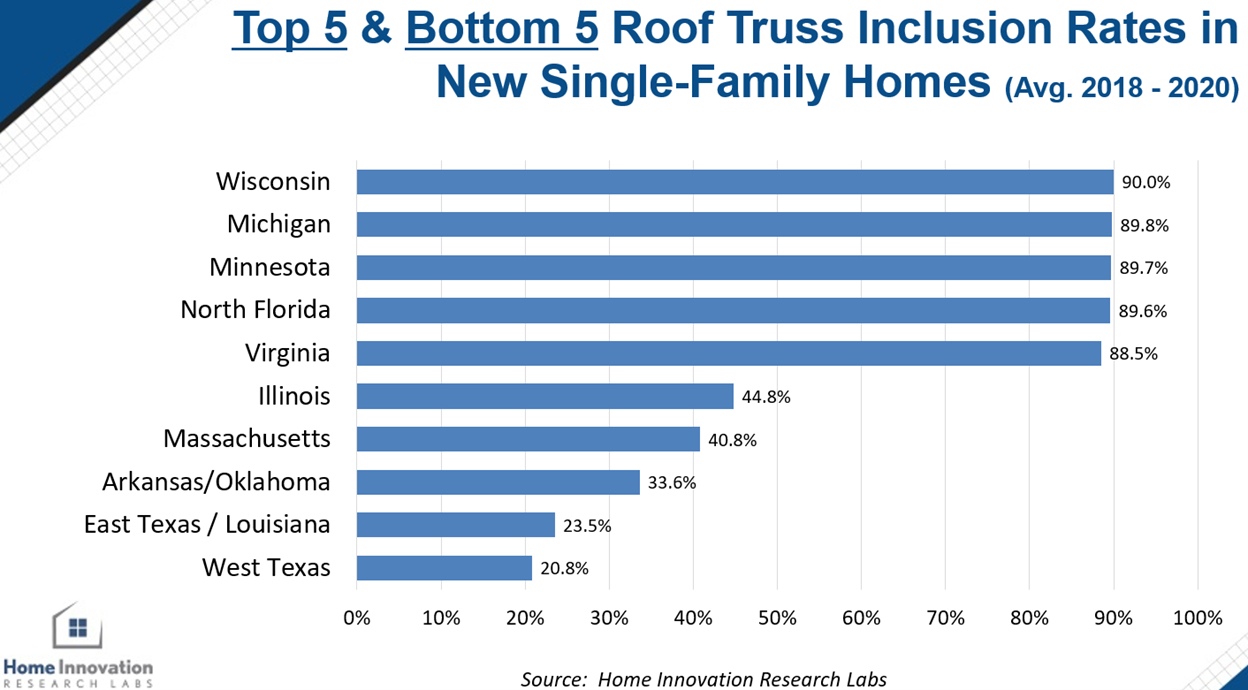Charts: There’s Room to Expand Roof Truss Market
Originally Published by: SBCA Magazine by Sean Shields — June 22, 2021
SBCA appreciates your input; please email us if you have any comments or corrections to this article.
Of all the manufactured structural framing products, roof trusses command a significant market share versus competing framing methods. However, this strong performance glosses over a lot of missed opportunity for component manufacturers.
Ed Huston from Home Innovation Research Labs recently gave a presentation to members of the SBCA at the Open Quarterly Meeting (OQM) in White Sulphur Springs, West Virginia. In that presentation, Ed shared some of the results from their April 2021 Builder Best Practice Reports on Structural Systems, which contains survey results from over 1500 homebuilder participants. We already reviewed the promising data on wall panels, and opportunities for floor trusses, but there’s plenty of growth potential for roof trusses too.
Take the 71.8 percent aggregate market share for roof trusses in single-family construction. According to Home Innovation Research Labs survey data, only 42.4 percent of roofs are framed using only trusses. The other 29.4 percent represent hybrid roofs framed from both trusses and rafters. That’s a lot of stick framing still being applied to roof truss systems.
With all the national media attention that is being paid to the jobsite workforce shortage and the interest in off-site construction, it’s interesting to note that the market share of roof trusses has taken a small amount of market share directly from rafters in single-family construction, but lost considerable share (eight percent) in multi-family construction.
At least in part, this trend may be explained by where a significant portion of construction is being built and what the predominant framing method is in those regions. The data paints a very stark picture on the fact that the opportunity for roof truss market share growth actually exists in just a few regions of the country, namely in the West South Central (read: Texas), East South Central (Missouri, Tennessee, Kentucky), and to a lesser extent New England (Massachusetts) and Mid Atlantic (Pennsylvania and New Jersey).
Ed provides one last graph that clearly illustrates the low use of roof trusses in certain markets.
This data suggests there is still a lot of market share to capture for roof truss framing, both within traditionally stick-frame markets and current hybrid roof framing approaches.


